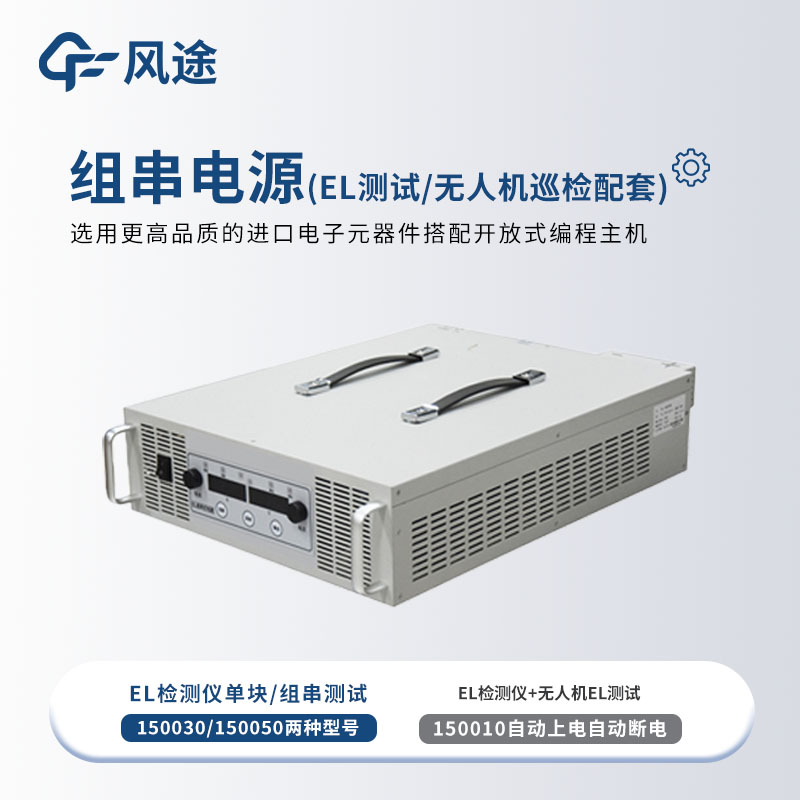Tianqiong Sensor IOT Technology Co., Ltd
Sales Manager:Ms. Emily Wang
Cel,Whatsapp,Wechat:+86 15898932201
Email:info@fengtutec.com
Add:No. 155 Optoelectronic Industry Accelerator, Gaoxin District, Weifang, Shandong, China

Sales Manager:Ms. Emily Wang
Cel,Whatsapp,Wechat:+86 15898932201
Email:info@fengtutec.com
Add:No. 155 Optoelectronic Industry Accelerator, Gaoxin District, Weifang, Shandong, China
time:2025-06-25 09:00:18 source:Weather Station viewed:192 time
EL (Electroluminescence) detection, a non-destructive testing method, works as follows: When a forward bias is applied to a photovoltaic (PV) module, electrons and holes diffuse to the P and N regions, respectively. The radiative recombination of charge carriers generates photons, resulting in the electroluminescence phenomenon. Since the EL spectral peak of crystalline silicon cells is approximately 1150nm, a near-infrared camera is required to capture the spectrum and form EL images. In a normal module, the active area shows high and uniform brightness, while defective areas (such as hidden cracks, broken grids, and black cores) exhibit low brightness. Internal issues of the module can be accurately located through image analysis.
In the production of PV modules and the construction/operation of power stations, a Series power supply supplies power for EL detection. During detection, a specific voltage or current must be applied to the module to make it emit light. The stable output of the Series power supply ensures constant current and voltage during testing, providing conditions for obtaining accurate EL images. The control module can also precisely set voltage and current parameters to adapt to the detection needs of different specifications of modules.
In other words, the Series power supply collaborates with EL detection to identify module defects.
Traditional EL detection methods require separate wiring and power supply for each battery module, which is cumbersome and time-consuming. However, the Series power supply can simultaneously power multiple series-connected battery modules, achieving an efficient testing mode of string-powered string detection. This reduces detection time and labor costs while improving detection efficiency.
FT-150050 is a string power supply carefully developed for the reverse power-on characteristics of PV power station strings. Its working principle is to convert alternating current into direct current and input it into the battery panels to excite electroluminescence for internal defect testing via EL (Electroluminescence). It can be paired with a string camera to realize the efficient testing mode of string-powered string detection. It is also suitable for single-panel or string testing and drone-assisted testing scenarios.
Functional Features
The programmable control panel allows direct setting of all programmable indicators of the power supply. The programmable remote interface is RS-485C, and the analog interface is (0-10V). It supports programmable timing for automatic power-on/off and programmable buffer protection, i.e., cached power-on/off for PV strings, preventing photovoltaic panels from being broken down by direct high-current input.
It has the following protection functions:
Reverse current protection: The reverse current impedance threshold can be set to prevent string current backflow.
Short-circuit protection: Prevents photovoltaic modules from being broken down by diodes due to reverse connection and short circuit of PV strings.
Overload protection: The overload threshold can be set, and the output stops automatically when overloaded.
Output short-circuit automatic protection: Prevents power failures and personal hazards caused by open circuits in power station lines or module strings.
Input voltage automatic protection: Prevents power components from burning out due to excessive input voltage fluctuations.
High-quality imported electronic components are combined with an open-programming host to ensure the stability and safety of string detection. It can simultaneously complete the detection power supply access for 1 to 32 PV panels (within 1500V).
Technical Parameters
Voltage output range: 0~1500V
Current output range: 0~5A
Power output: 0~8KW
Voltage accuracy: 0.001V
Current accuracy: 0.001A
Power accuracy: ±0.001A; ±0.001V
Power stability: ±0.002%
Output accuracy: ±0.001%
Output efficiency: >95%
Input voltage: 380VAC
Input frequency: 50/60Hz (Note: The original "50/80Hz" is corrected to the standard "50/60Hz" as 80Hz is not a common power frequency.)
Input power factor: >0.5

Ground-based fixed monitoring points are limited by their installation locations and can only reflect visibility conditions in specific areas, making it difficult to cover the airspace above vast or complex terrains. For example, in mountainous areas, canyons, coastal regions, etc., there may be dif...
Photovoltaic weather stations are professional monitoring devices specifically designed for the photovoltaic industry, capable of real-time and precise measurement of multiple key parameters. Among them, the measurement of thermoelectric total radiation parameters can obtain comprehensive energy dat...
With the acceleration of urbanization, dust pollution from construction sites has become increasingly severe. It not only impairs urban air quality but also poses a threat to residents' health. To efficiently monitor and control this issue, the Dust Detector system has been developed by leveragi...
With the accelerated pace of current urban construction and the frequent occurrence of abnormal climates, the pressure on drainage facilities has increased dramatically, and traditional waterlogging drainage methods are insufficient to withstand waterlogging caused by heavy rainfall. Against this ba...